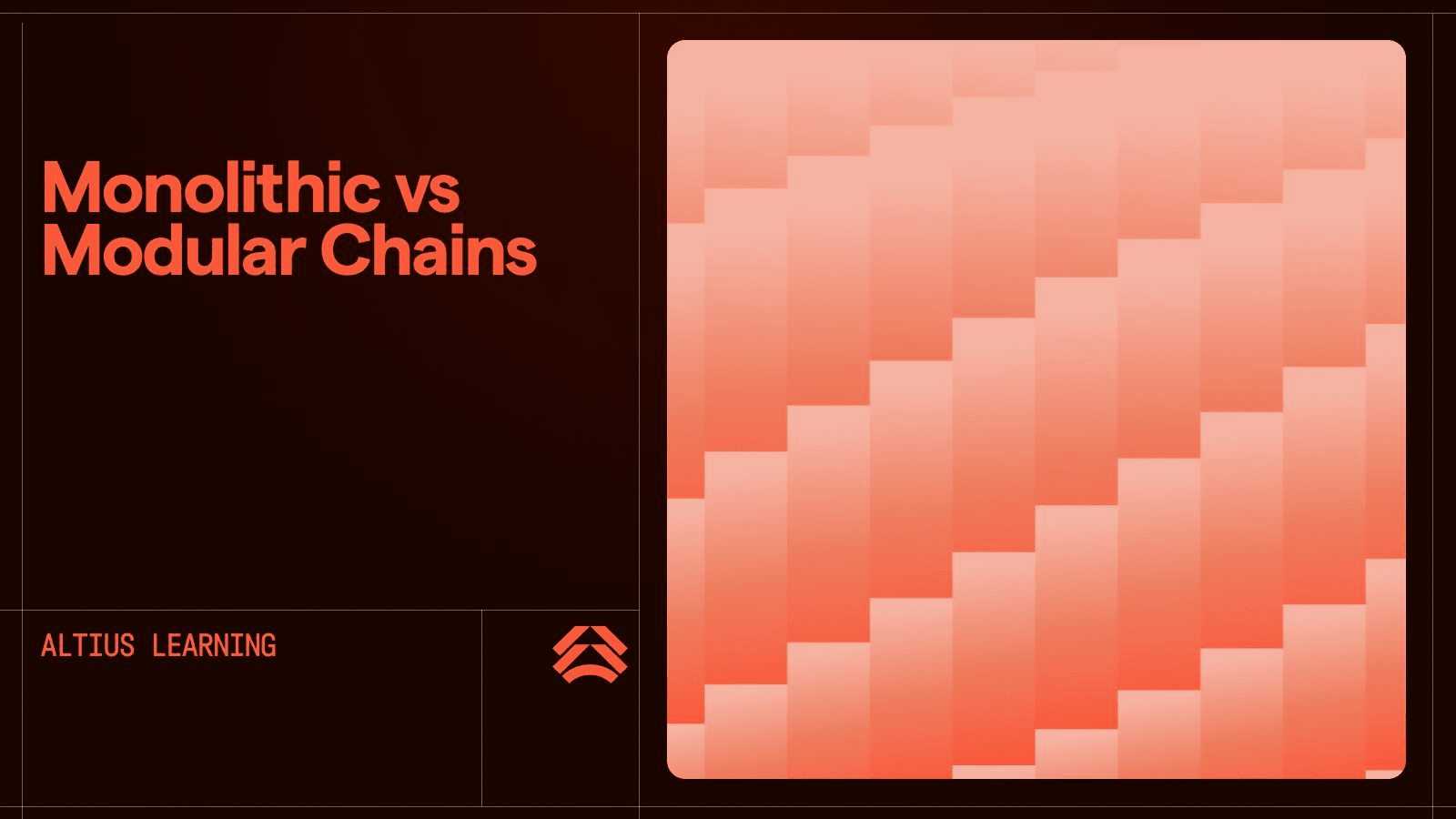Blockchain technology has come a long way since the early days with a simple ledger, a single purpose of Bitcoin. As the industry matures, developers face new challenges: bottlenecks in scalability, demands for flexibility, and increasing requirements for decentralization. This evolution has sparked a debate about architecture, shaping the next generation of blockchain: monolithic vs. modular.
In this article, we will explore what these terms mean, why the differences matter, and what each approach brings. We will also look at real-world examples and discuss the direction of the industry. Whether you are new to blockchain or have delved deep into protocol design, understanding this debate is essential to see how the chains of tomorrow could reshape the decentralized world.

What is a monolithic chain?
Monolithic chains are blockchains that perform all core functions within a single unified layer:
Consensus – agreement on the order of transactions.
Execution – processing and updating the state of the ledger.
Data availability – ensuring transaction data is accessible to all nodes.
Bitcoin and Ethereum (before upgrades like sharding) are typical examples. These blockchains handle everything in-house, aiming for tight integration and high security.
The power of simplicity
The monolithic model is the foundation of the first generation of blockchains. By encapsulating consensus, execution, and data availability, these networks prioritize security and decentralization over speed. This design has proven resilient but struggles with scalability: as more users participate, throughput remains relatively low, and costs can skyrocket.
What is a modular chain?
Modular blockchains take a different approach: separating core functions into distinct layers or specialized chains. A modular blockchain architecture typically includes:
A base layer (Layer 1) provides consensus and data availability.
One or more execution layers (Layer 2 or rollup) handle transactions.
There may be specialized layers for payments, privacy, or governance.
This design emerged when developers realized that scalability and flexibility could be improved if each component could evolve independently.
Ethereum's transition to rollups, Celestia's focus on data availability, and projects like Cosmos and Polkadot reflect this trend.
Pros and cons
Monolithic chains
Advantages:
A simpler architecture, easier to reason about and more secure.
Ensures strong security, as all functions are tightly integrated.
Less friction for developers: a unified environment for smart contracts and dApps.
Disadvantages:
Difficult to scale: limited throughput and high fees during congestion.
Upgrading can be complex and disruptive.
Less flexible in applying experimental features.
Modular chains
Advantages:
Significant scalability potential (e.g., thousands of transactions per second).
Flexibility: execution layers and rollups can customize functionality.
Easier to innovate without risking the overall network's security.
Disadvantages:
Higher complexity in design and operation.
Interoperability risks: if communication between layers fails, issues could propagate.
Security is more distributed and relies on correct integration.
Real-world examples and use cases
Monolithic chains in operation
Bitcoin: handles consensus, execution, and data availability directly in a single-layer proof-of-work model.
Solana: maintains a monolithic design with high throughput and low latency, allowing for thousands of transactions per second, but requires higher hardware specifications for validators.
Modular chains lead innovation
Ethereum (post-rollup): Ethereum mainnet focuses on consensus and data availability, while execution shifts to rollups like Arbitrum and Optimism.
Celestia: only provides data availability and consensus, leaving execution entirely to other chains.
Polkadot & Cosmos: allow different chains to specialize while sharing security or communication protocols.
This shift allows dApp developers to choose the environment that best fits their needs, whether it's a high-speed trading platform, a private chain for enterprises, or large-scale DeFi applications.
Why is this debate important?
As blockchain approaches widespread acceptance, the industry faces an impossible trilemma: balancing scalability, security, and decentralization. Monolithic and modular chains follow different paths to address it:
Monolithic chains adhere closely to the original spirit of blockchain: a single, fully decentralized, highly secure chain – but with limited scalability.
Modular chains aim for scalability by breaking tasks down, at the cost of added complexity.
For developers, this debate shapes the design choices behind every new dApp, protocol, or Layer 2 network. For users, it affects transaction fees, speed, and reliability of the network.
Future prospects
We are unlikely to see any one approach 'win' completely. Instead, the future may be a hybrid ecosystem:
Large monolithic chains can serve as a payment layer or base layer.
Modular execution environments handle specialized applications.
Interoperable protocols allow assets and data to flow freely between chains.
Research is also opening new frontiers, such as fragmented monolithic chains (e.g., Ethereum's future plans) or recursive rollups (rollups built on other rollups), combining the benefits of both models.
As technology evolves, chains can flexibly change roles: today monolithic, tomorrow modular, depending on network needs.
Conclusion
The debate between monolithic and modular chains reflects the maturation and ambitions of the blockchain industry. Monolithic chains offer simplicity and strong security but face limitations in scalability. Modular chains provide flexibility and great scalability but must contend with complexity and interoperability risks.
The core of this debate is not which is 'better,' but what possibilities each opens up. Monolithic chains demonstrate the potential of blockchain. Modular chains aim to bring it into the mainstream.
Understanding these architectures is important for anyone building, investing, or simply curious about the next generation of decentralized technology.


